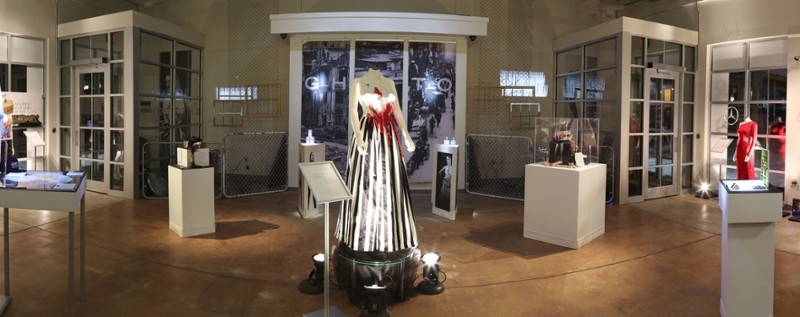ArtStreet’s GHETTO installation goes international
By: Ray Mahar – Staff Writer
A certain conversation has been spreading at the University of Dayton surrounding the nickname of the South Student Neighborhood.
Students, faculty, staff and alumni have used the word “ghetto” to describe the university’s student neighborhood since the ’60s. It’s also the word used to describe a part of a city, especially a slum area, occupied by minority groups. The nickname for our campus neighborhood has sparked both controversy and discussion among the UD community.
The GHETTO installation featured at ArtStreet in February 2015 recently launched internationally. Queens University in Canada will display the exhibit from Feb. 20 to March 16. The international scope of the discussions stemming from this exhibit is what ArtStreet and Institute for Arts Nexus (IAN) Director Brian LaDuca is most anticipating.
The exhibition “GHETTO: A Retail Art Installation addresses the issue of the term “ghetto” in an artistic, four-dimensional display. The fourth dimension appeals to emotion, where people implicitly reflect on the material being displayed.
“It’s a sort of history lesson: People will learn and observe the past lives of people who experienced the ghetto,” LaDuca said.
The installation utilizes a retail art experience, displaying different articles of luxury brand GHETTO merchandise. People pass through, developing some sort of consciousness of the term. It is a way to educate and engage in the history and controversy of the topic in a more controlled setting.
“It’s two different schools coming together to address an issue and create some sort of dialogue,” LaDuca said.
That’s what LaDuca claims is most important. People have to react to it in some way.
The social commentary that results from the installation is powerful. Some defend tradition. Some argue against privilege. Some didn’t realize this word could harm other people. If these conversations are happening at the exhibition launch at Queens, the exhibit is accomplishing its mission.
The installation will be placed near Queens’ most popular coffee shop, similar to our university’s ArtStreet Cafe. As students there pass by during these upcoming weeks, dialogue will instigate.
It is hard to confront controversial topics and change daily vernacular. Certainly, UD has faced similar struggles, as students and alumni, and some faculty and staff, resist the renaming of the ghetto to “student neighborhood,” while many others fight for it. The installation is a tool to help its audience understand the negatives of the word before knee jerk reactions against it. If there is understanding, there can be more empathy in the debate, as in any debate. GHETTO works to provide that understanding.
There are no future plans after Queens to place GHETTO in other parts of either country. LaDuca said there are 17 other universities in the United States the GHETTO research team found that are engaging in discussions similar to the one our campus. Perhaps the success of Queens will allow for further usage of GHETTO to spark conversation throughout both domestically and internationally.
GHETTO was launched in the White Box Gallery on Feb. 24, 2015 and almost exactly a year later, opened internationally. Photo by Andrew Yedlick ‘16.

